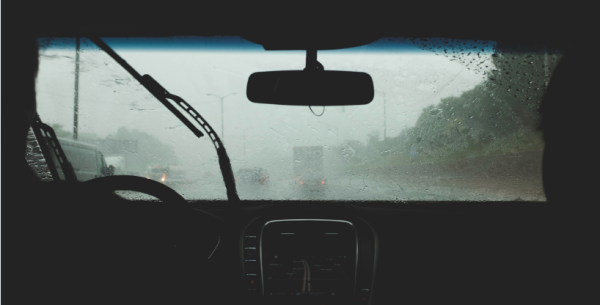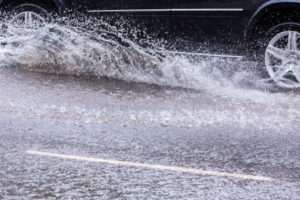Winter Driving Tips for the Seattle Area

How do you prepare for winter driving in the Seattle area? Except for brief periods every winter, Seattle isn’t known for it’s snow and ice covered roads, so unless you plan on traveling across the mountains or to the passes, it won’t be required for you to get studded tires put on your car, although it never hurts to have a pair of chains/cables handy for the few times it does snow.
Nevertheless, even though it infrequently snows, temperatures still drop, roads can still be slippery, flooded with water from heavy rains and dangerous…there is still reason to prepare your car for the winter months ahead.
Get your car in shape for winter…
It’s all about maintenance, a well maintained car is a safer car, and just before winter hits is a good time to make sure all systems are in good working order. Let’s start at the front of your auto…
- Make sure all of your exterior lights are working, not only is it safer, but it’s the law. When one or more of your lights are out, it makes it difficult for other drivers to accurately see you…they may wonder, are you a motorcycle, on the wrong side of the road or do you have a burnt out light? It’s especially difficult at night during a rain storm.
- How are your windshield wipers? With the heavy rains that the Seattle area experiences, your wiper blades need to be in top condition so you have 100% clear visibility. Also make sure your wiper fluid is full.
 Make sure your tires are in good condition:
Make sure your tires are in good condition:
- How much tread do you have? When the tread has gone down to about 4/32 of an inch, it’s time to have your tire replaced. Tires with minimum tread increase your risk of hydroplaning in standing water, and not being able to grip the roads during snow.
- One way to test your tread is with a penny, insert the penny into the tread of your tire, with President Lincoln’s head facing you and upside down, if you can see his entire head, it’s time for new tires.
- Have your tires filled with the right amount of air. The colder air of autumn and winter will cause your air pressure to go down or contract. Check them periodically to make sure they are filled to their recommended level. Underinflated tires will not handle well, especially in stormy weather, and can cause the car to become unstable.
- How much tread do you have? When the tread has gone down to about 4/32 of an inch, it’s time to have your tire replaced. Tires with minimum tread increase your risk of hydroplaning in standing water, and not being able to grip the roads during snow.
- More pressure will be being put on your battery to get your vehicle started in colder weather, so have it checked and possibly replaced (even if it appears to be working okay). A dead battery in freezing or stormy weather is no fun!
- Make sure your car’s scheduled maintenance is current, take it in for a professional to have a look at the brakes, alternator, the defroster, the heater, the filters and the hoses.
Be prepared and know the conditions of the roads you plan on traveling…here is a link put out by the Washington State Department of Transportation that will keep you current and updated on roads conditions and the traffic.
No matter how prepared you and your car are, there can still be accidents. So part of being prepared is having the right auto coverage…
For all of your Insurance questions or needs, Contact Whitcomb Insurance


Comments are closed.